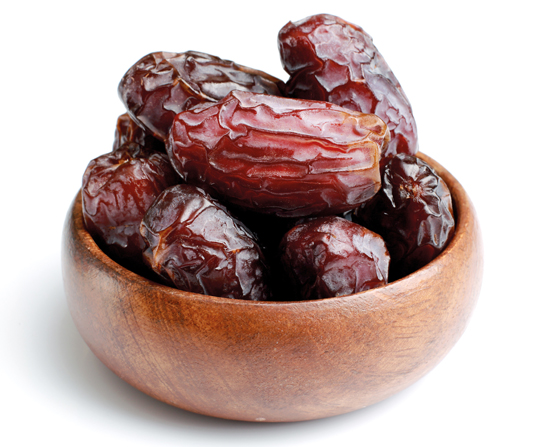Fancy a Date? Heck, Why Not 10?
April 27, 2022 Return

WORDS PANK JIT SIN
Who could forget the famous sultry whisper of “Yusuf Taiyoob” come every fasting month. The name is synonymous with dates and is a testament to its marketing success. Dates (Phoenix dactylifera) are very much part of Southeast Asian culture and was probably introduced into the region by the spread of trade. We did some digging around and found that dates are as potent as figs and perhaps that’s the reason our forefathers took such a liking to them.
The date palm
Yes, dates grow on palms. some of our favourite food ingredients come from palm trees. These include attap chee, palm sugar (gula melaka), and sago. When chopped down, the young buds of coconut trees can be eaten raw in a salad. The leaves can also function as material for crates and furniture, and packing material. Our traditional rooftops are made from attap leaves, which is a type of palm.
Similar to the fig (which was covered in the April issue of HealthToday), the date palm is one of the oldest cultivated plants in human history having been grown in Saudi Arabia from 600 BC. It is believed to have originated in the area between Egypt and Mesopotamia.
Today, most of our dates come from Iraq, Iran, Arabia and Morocco. Interestingly, dates are also cultivated in the US in states with hot tropical climates such as Florida and California, and also in Australia, Mexico and South America. Each date palm can produce between 40 and 80 kg of fruit in each fruiting season.
Why dates?
Well, dates are nutritious and filling. It could be related to the fact that they grow in very extreme regions, and thus the animals that feed on the fruits need to be well nourished to carry the seeds far away. Or it could be ability of the plant to send roots deep into the soil to extract water and nutrients. Whichever the reason, dates contain high amounts of complex sugars and decent amounts of micronutrients such as vitamins and minerals. Most importantly, it has fibre, which means it’s really good for your bowel movement.
Take for example the medjool date, which is one of the most widely grown dates—there are over 200 varieties—each 100-gram serving has 75 g of carbohydrates, seven grams of fibre, two grams of protein, and healthy levels of potassium, magnesium, copper, manganese and iron.
Dates have health benefits
Beyond dietary benefits, dates can be good for health, too. Dried dates have the highest concentration of total polyphenols (these are the compounds that give good health benefits) among all dried fruits due to the greater exposure to sunlight and extreme temperature at which it is processed. Polyphenols include our familiar flavonoids, which are potent antioxidants with various additional health effects. Date palm extracts have been shown to have anti- inflammatory, antifungal, as well as antitumour properties. Recent rat studies show that dried date consumption helped to reduce the rate of mammary cancer, cancer size, and could prevent the spread of cancer in rats which already had cancer. Most rat studies can be safely inferred onto humans.
Date fruit extracts are also liver protective and has been shown to repair damaged liver cells. Interestingly, components of date fruit extract known as diosmetin glycosides have been shown to increase insulin and stimulate an enzyme in the body which regulates blood glucose levels.
In addition to blood sugar modulating effects, the extracts of date palm can also lower cholesterol levels in the blood.
Fancy growing your own date tree?
If you have the space for it, why not? Bear in mind though, the tree takes 3 to 5 years to mature and start bearing fruits. The fruit harvest in the initial years can be small and disappointing. Also, date trees are dioecious, meaning they have male and female plants, you’ll need to plant more than one for the tree to bear fruit successfully.
Just like the common fig plant, we brought in an insect pest while importing date palms from our neighbour, Thailand. One of the most dangerous in terms of economic impact is the red palm weevil, which eats up the trunk of the palm tree and kills it slowly. It can attack any palm type of tree meaning it has the potential to decimate our oil palm and coconut plantations.
Just a reminder to all our readers—just because something is good, doesn’t mean you can go all out and gorge on it. Most things are good in moderation and again, the beneficial effects of fruits should never be used to replace medication especially if you are already clinically diagnosed with diabetes or heart disease. HT
